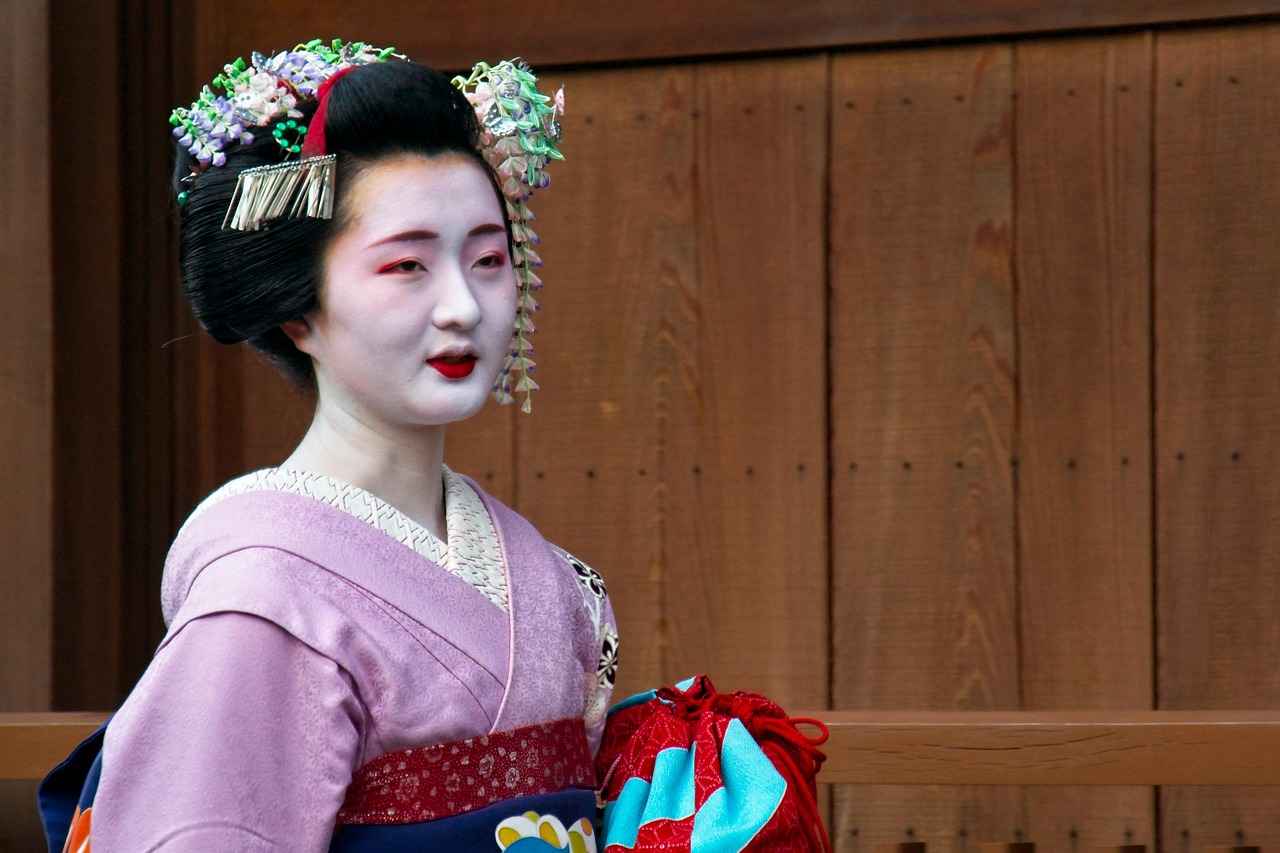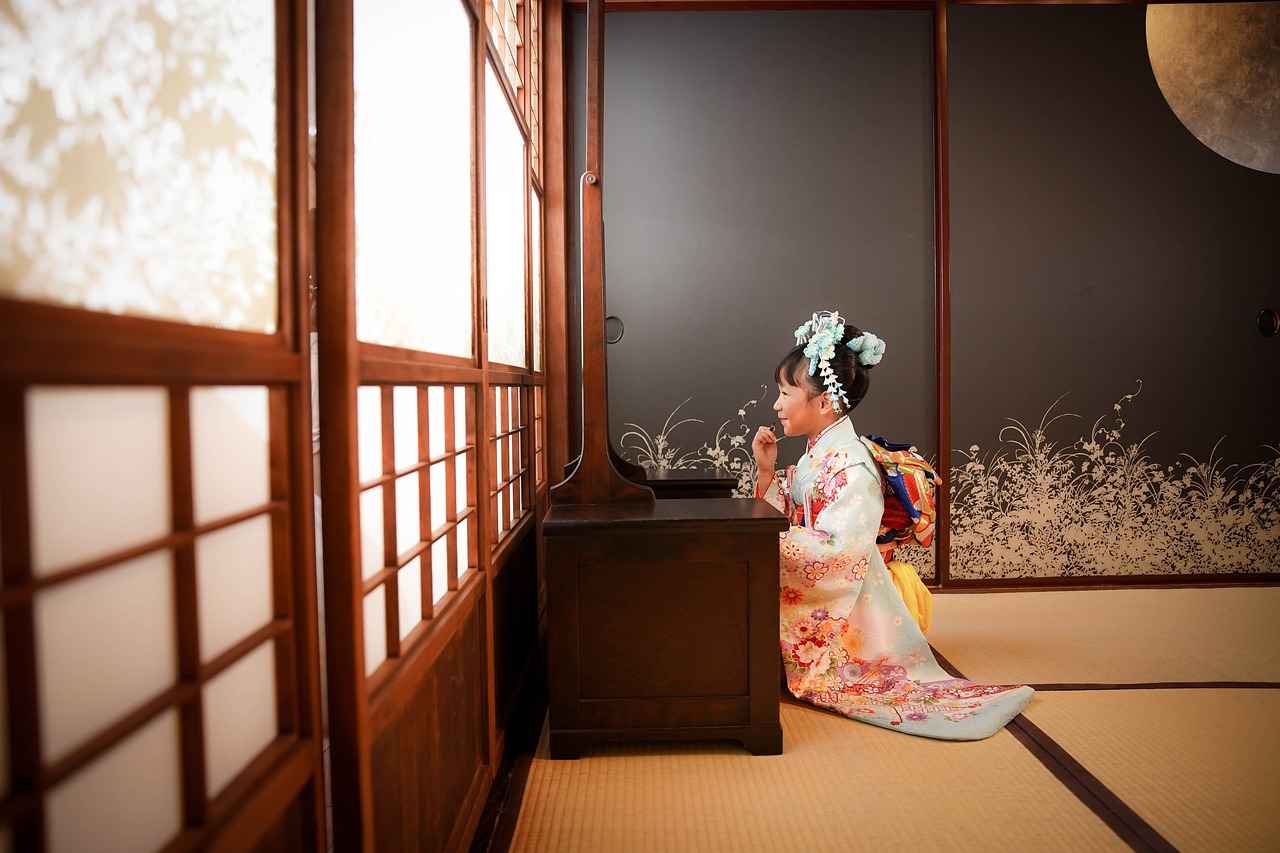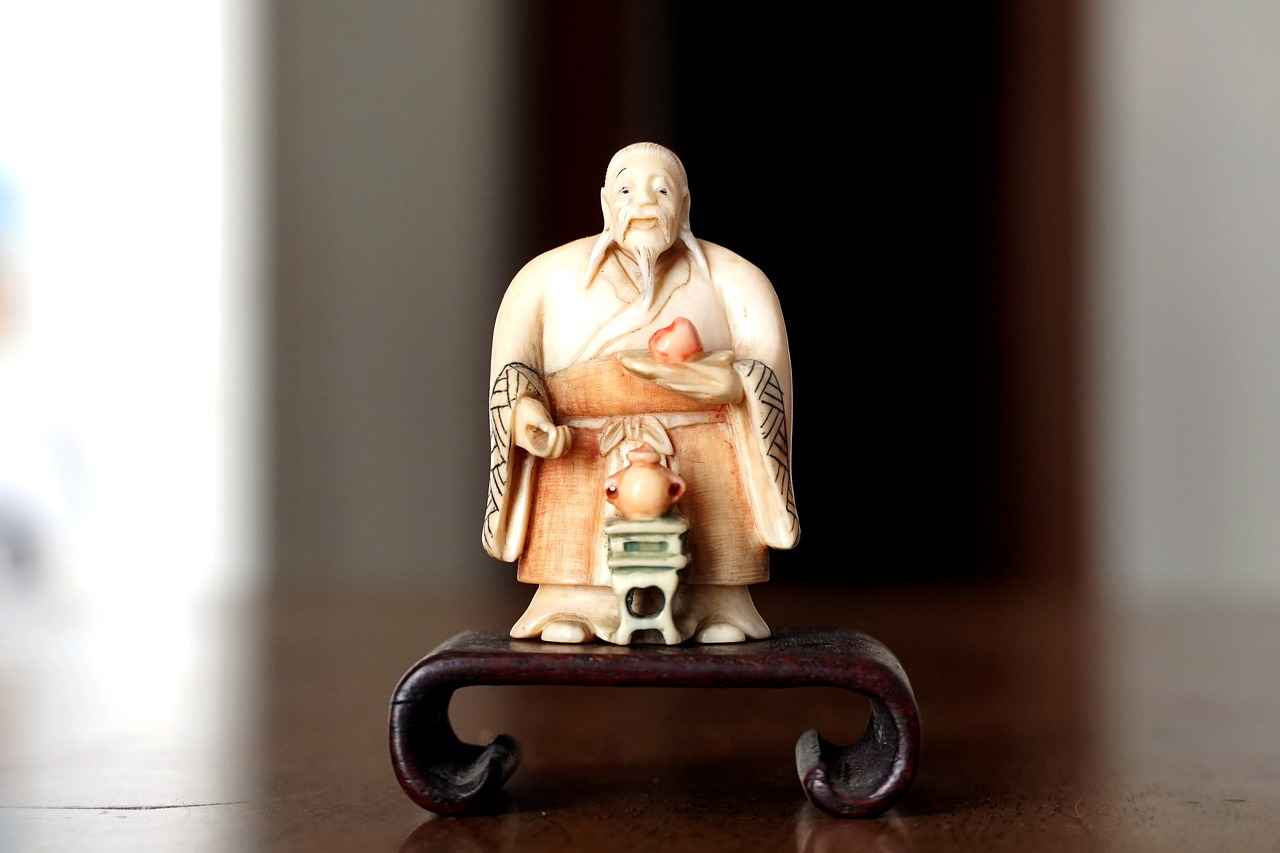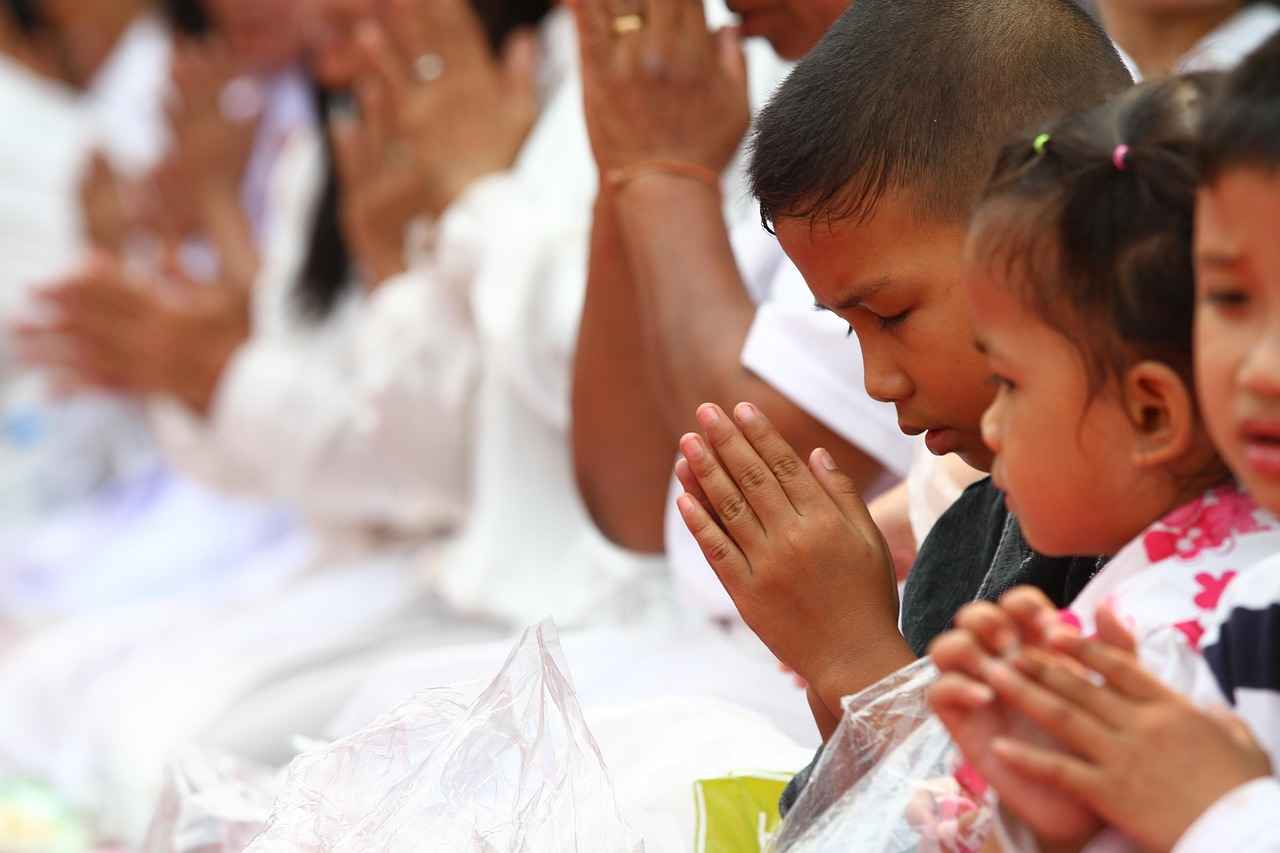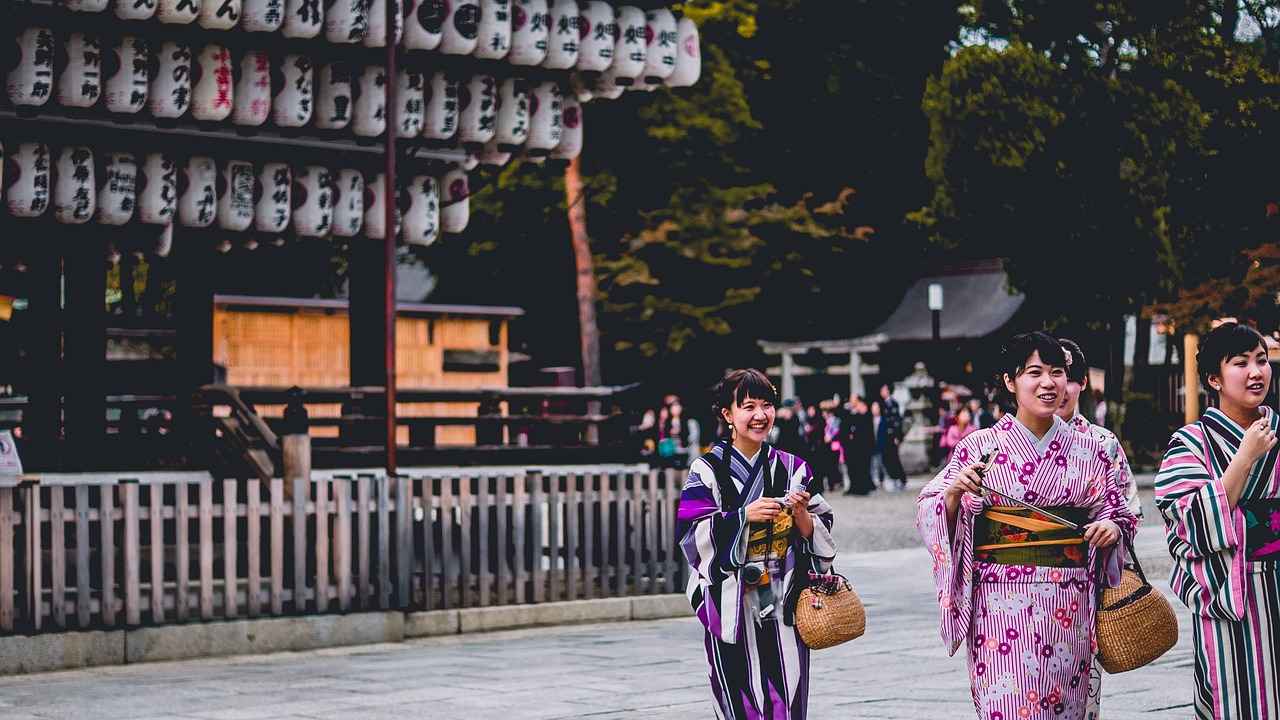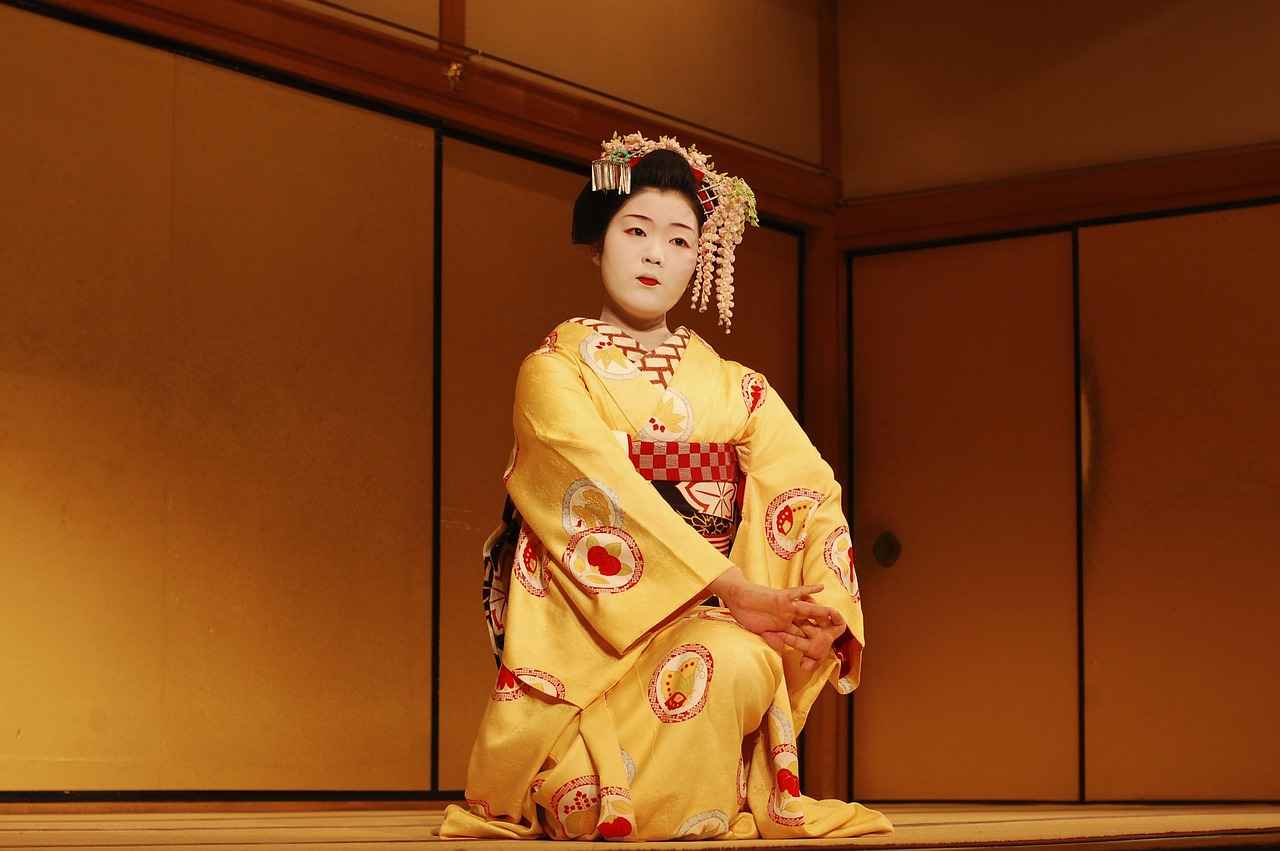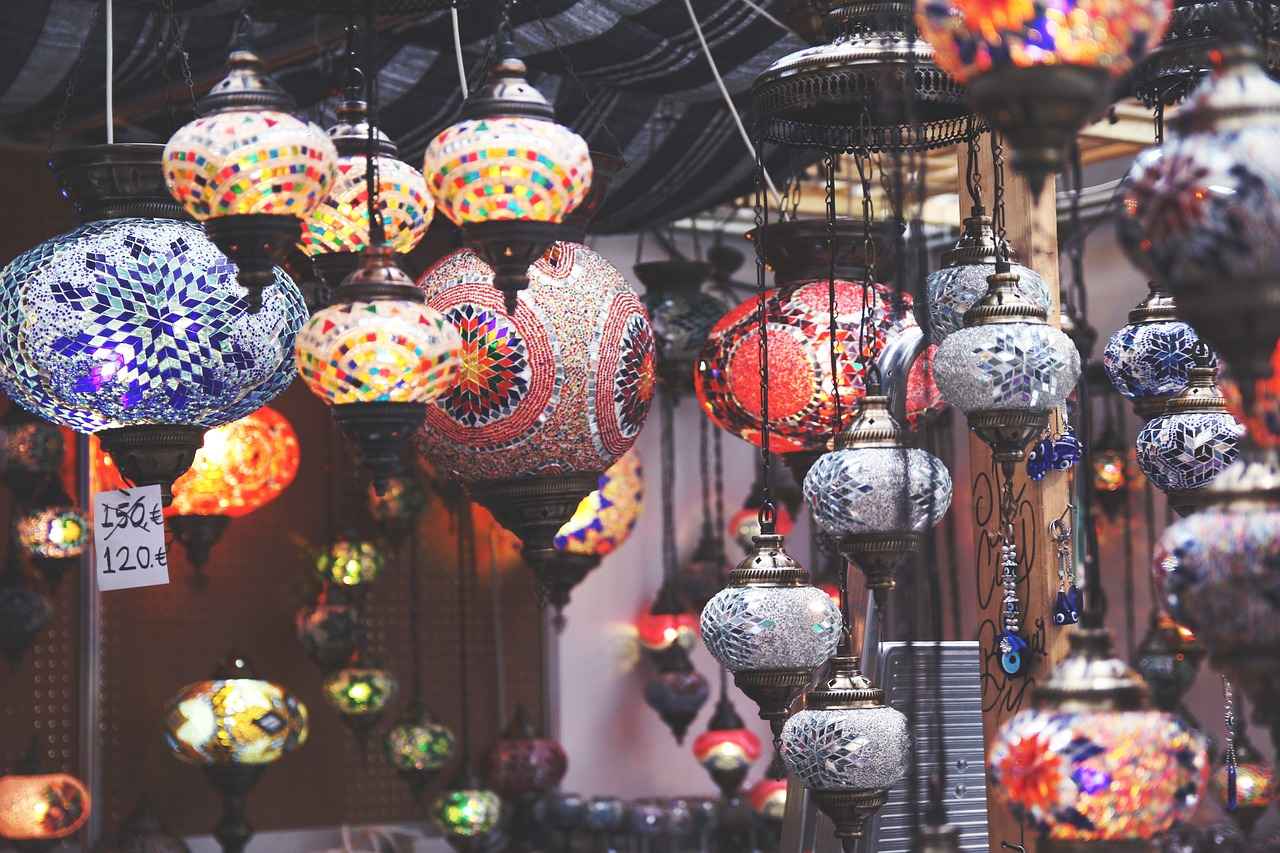This article delves into the world of kimono patterns, offering insights into their rich history, diverse styles, and practical tips for incorporating them into your next fashion project. Whether you are an experienced designer or a beginner, this guide will provide you with design ideas and techniques to create stunning pieces that celebrate this traditional garment.
Understanding Kimono Patterns
Kimono patterns are not merely decorative; they carry deep cultural significance and reflect the aesthetics of Japanese tradition. Each pattern tells a story and embodies various meanings, from nature to seasonal changes. In this section, we will explore the historical context and symbolism behind some of the most popular patterns.
Traditional Kimono Patterns
- Asanoha Pattern: Resembling hemp leaves, this pattern symbolizes growth and resilience. It is a popular choice in kimono designs, often used to convey strength.
- Seigaiha Pattern: Depicting waves, this pattern represents peace and tranquility, making it a serene choice for elegant kimono designs.
Contemporary Kimono Designs
Modern fashion has seen a resurgence of kimono aesthetics, leading to innovative designs that blend traditional elements with contemporary styles. Designers often experiment with color and texture, creating unique garments that appeal to a diverse audience.
Creating Your Own Kimono Patterns
Designing your own kimono patterns can be a fulfilling creative endeavor. Consider the following tips:
- Choosing the Right Fabrics: The fabric you select plays a crucial role in the final look of your kimono. Lightweight materials like silk or cotton are ideal for traditional designs.
- Incorporating Personal Elements: Adding personal touches, such as custom motifs or colors, can make your kimono truly unique.
Conclusion: Embrace the Beauty of Kimono Patterns
Kimono patterns offer a rich tapestry of cultural heritage and artistic expression. By embracing these designs in your next fashion project, you can create something beautiful and meaningful that honors the traditions of the past while celebrating your unique style.

Understanding Kimono Patterns
Kimono patterns are not merely decorative; they embody a deep cultural significance that resonates through centuries of Japanese history. Each design tells a story, reflecting the aesthetics, traditions, and values of the Japanese people. In this section, we will explore the rich history and meanings behind various patterns used in kimono designs, revealing how they are intertwined with Japan’s cultural identity.
The evolution of kimono patterns can be traced back to the Heian period (794-1185), where the use of intricate designs began to flourish. Patterns were often inspired by nature, mythology, and seasonal changes, serving as a canvas for artistic expression. For instance, the Asanoha pattern, which resembles hemp leaves, symbolizes growth and resilience. This geometric design is not only visually appealing but also carries a message of hope and prosperity.
Another notable pattern is Seigaiha, which features waves and represents peace and tranquility. This design reflects the harmony between humans and nature, showcasing the Japanese appreciation for the natural world. Each pattern serves a purpose, often linked to auspicious meanings that are celebrated during special occasions.
As we delve deeper into the world of kimono patterns, it becomes evident that they are more than just fashion statements. They are a reflection of Japanese culture and history, embodying the spirit of the people. Understanding these patterns allows us to appreciate the art of kimono-making and its significance in contemporary fashion.
Incorporating these traditional designs into modern fashion projects can lead to unique and meaningful creations. By understanding the history and symbolism behind each pattern, designers can infuse their work with cultural depth and authenticity.
In conclusion, kimono patterns offer a rich tapestry of artistic expression and cultural heritage. As we explore these designs, we can embrace their beauty and significance, creating pieces that resonate with both tradition and modernity.
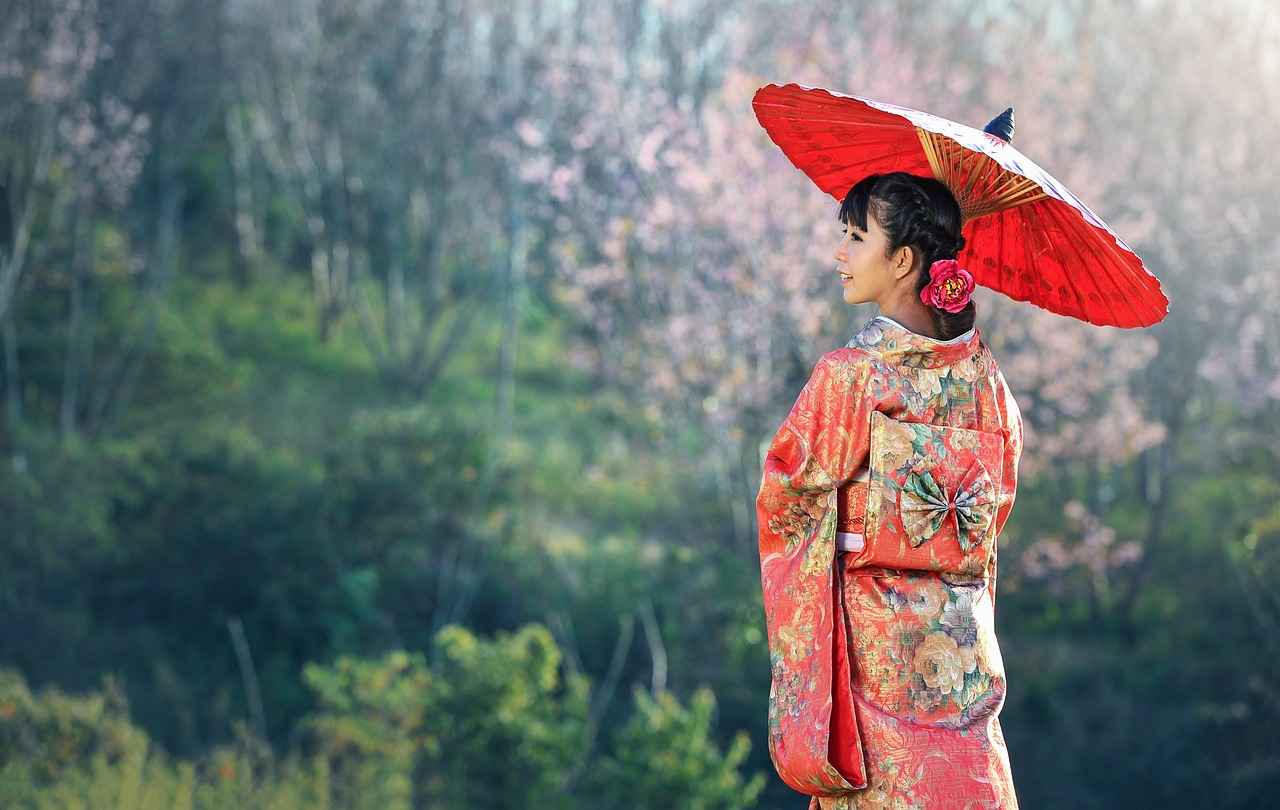
Traditional Kimono Patterns
are not merely decorative; they embody the essence of Japanese culture and history. Among the most celebrated patterns are Asanoha and Seigaiha, each carrying profound symbolism and stories that date back centuries.
The Asanoha pattern, which resembles the leaves of the hemp plant, symbolizes growth and resilience. Traditionally, this pattern is associated with the idea of prosperity and strength, making it a popular choice for celebratory garments, especially during significant life events like weddings and births. Its geometric design not only captivates the eye but also represents the interconnectedness of nature and humanity.
On the other hand, the Seigaiha pattern, characterized by its wave-like motifs, signifies peace and tranquility. This pattern evokes the calming essence of the sea, reminding wearers of the importance of harmony in life. Commonly used in formal kimonos, the Seigaiha design reflects a deep appreciation for the natural world and its rhythms.
| Pattern | Symbolism | Common Uses |
|---|---|---|
| Asanoha | Growth, Resilience | Celebrations, Weddings |
| Seigaiha | Peace, Tranquility | Formal Events |
Understanding these traditional patterns allows for a deeper appreciation of kimono fashion. They not only serve as aesthetic elements but also as carriers of meaning and cultural significance. As contemporary designers continue to reinterpret these classic designs, they breathe new life into the rich heritage of Japanese textiles, making them relevant in today’s fashion landscape.
In conclusion, exploring the Asanoha and Seigaiha patterns reveals the intricate relationship between art, culture, and identity in Japan. These patterns are not just beautiful; they are a testament to the enduring legacy of kimono craftsmanship.
Asanoha Pattern
The , which resembles the leaves of hemp, is a significant symbol in Japanese culture, representing both growth and resilience. This traditional design is not only visually appealing but also deeply rooted in the historical context of Japan. In this article, we will explore the essence of the Asanoha pattern, its applications in kimono designs, and its cultural significance.
Historically, the Asanoha pattern has been used in various textiles, particularly in kimono fabrics. The geometric arrangement of the leaves creates a dynamic and harmonious visual effect that is both modern and traditional. Its repetitive motifs symbolize the idea of perseverance, making it a popular choice for celebratory occasions such as weddings and festivals.
| Aspect | Details |
|---|---|
| Symbolism | Growth and resilience |
| Visual Characteristics | Geometric leaf shapes |
| Common Uses | Kimonos, textiles, and home decor |
In contemporary fashion, designers are reinterpreting the Asanoha pattern, incorporating it into modern clothing lines and accessories. This fusion of traditional design with modern aesthetics allows for a fresh take on kimono fashion, appealing to a wider audience. For instance, the Asanoha pattern can be found in various items, from casual wear to high-fashion garments, showcasing its versatility.
- Unique Textiles: The Asanoha pattern is often printed on silk, cotton, and other fabrics, enhancing the texture and visual appeal of the garment.
- Color Variations: While traditionally seen in muted tones, contemporary designs often feature vibrant colors, making the pattern more accessible to younger generations.
- Personalization: Many artisans now offer customized Asanoha designs, allowing individuals to express their unique style while honoring tradition.
In conclusion, the Asanoha pattern is more than just a decorative motif; it embodies the spirit of Japanese culture and its values of strength and perseverance. As you consider incorporating this timeless design into your next fashion project, remember its rich history and the beauty it brings to contemporary style.
Design Characteristics of Asanoha
The Asanoha pattern is a fascinating aspect of Japanese textile design, renowned for its intricate geometric motifs that draw inspiration from the natural world. Resembling the leaves of the hemp plant, this pattern not only captivates the eye but also embodies a rich cultural significance. In this section, we will explore the unique design characteristics of Asanoha and how they can enhance your fashion projects.
One of the most striking features of the Asanoha pattern is its symmetrical geometry. The repeating shapes create a sense of harmony and balance, making it an ideal choice for various fashion applications. Designers often utilize this pattern to evoke feelings of stability and growth, aligning with the symbolism of resilience that the hemp plant represents in Japanese culture.
Moreover, the versatility of the Asanoha pattern allows it to be easily adapted to modern aesthetics. Its clean lines and structured design can be incorporated into a range of garments, from traditional kimonos to contemporary dresses and accessories. The pattern can be rendered in various colors and fabrics, enabling designers to tailor their creations to specific themes or collections.
Additionally, Asanoha’s appeal lies in its ability to blend seamlessly with other motifs. When combined with floral or abstract designs, it can create a visually stunning contrast that enhances the overall look of a piece. This fusion of patterns not only adds depth to the design but also invites creativity and innovation in fashion projects.
In conclusion, the Asanoha pattern stands out for its geometric beauty and profound cultural significance. By incorporating this unique design into your fashion projects, you can create pieces that are not only visually striking but also rich in meaning. Embrace the Asanoha pattern to elevate your designs and connect with the timeless traditions of Japanese artistry.
Modern Interpretations of Asanoha
The Asanoha pattern, with its roots in traditional Japanese design, is experiencing a renaissance in contemporary fashion. Designers are finding innovative ways to reinterpret this classic motif, allowing it to resonate with modern aesthetics while honoring its cultural significance.
One popular approach is the incorporation of the Asanoha pattern into streetwear. By using bold colors and oversized silhouettes, designers are making this traditional pattern accessible to a younger audience. The geometric shapes of the Asanoha lend themselves well to graphic tees, hoodies, and joggers, creating a striking visual impact.
Another exciting trend is the use of the Asanoha pattern in high-fashion collections. Designers are experimenting with luxurious fabrics such as silk and satin, which enhance the elegance of the pattern. This approach often involves intricate embroidery or digital printing techniques that breathe new life into the traditional design, making it suitable for upscale events.
In addition, the Asanoha pattern is being integrated into accessories like bags, scarves, and even footwear. These items allow consumers to embrace the pattern in subtle ways, appealing to those who appreciate the cultural heritage without overwhelming their personal style. The versatility of the Asanoha design makes it a perfect candidate for various fashion items.
Moreover, the rise of sustainable fashion has led to designers using eco-friendly materials to create pieces featuring the Asanoha pattern. This not only highlights the beauty of the design but also aligns with contemporary values of sustainability and ethical production.
As the Asanoha pattern continues to evolve, it remains a vibrant symbol of resilience and growth. By embracing modern interpretations, designers are ensuring that this traditional motif remains relevant in today’s fashion landscape, inviting a new generation to appreciate its beauty and significance.
Conclusion: The reinterpretation of the Asanoha pattern in modern fashion exemplifies how traditional designs can be adapted to fit contemporary tastes. Whether through streetwear, high fashion, or accessories, the Asanoha pattern is poised to make a lasting impact in the world of fashion.
Seigaiha Pattern
The Seigaiha pattern, characterized by its repeating wave motifs, is a traditional Japanese design that embodies a sense of peace and tranquility. This beautiful pattern, which translates to “blue ocean waves,” has been utilized in various forms of Japanese art and textiles for centuries, particularly in kimono fashion. In this section, we will explore the significance of the Seigaiha pattern and its common applications in contemporary kimono designs.
The origins of the Seigaiha pattern can be traced back to the Heian period (794-1185), where it was often associated with the sea and the natural world. The undulating waves symbolize the continuous flow of life and the harmony found in nature. This pattern is not only aesthetically pleasing but also carries deep cultural meanings, representing good fortune and prosperity.
In the context of kimono fashion, the Seigaiha pattern is frequently used in a variety of styles, from formal to casual wear. It can be found in both bold and subtle color palettes, allowing designers to create versatile pieces suitable for different occasions. For instance, a kimono adorned with a vibrant Seigaiha pattern may be worn during festive celebrations, while a more muted version can be ideal for everyday wear.
| Common Applications | Occasions |
|---|---|
| Formal Kimonos | Weddings, Ceremonies |
| Casual Kimonos | Everyday Wear, Festivals |
| Accessories | Obi, Haori |
Modern designers have embraced the Seigaiha pattern, integrating it into contemporary fashion while maintaining its traditional roots. By experimenting with color and fabric, they create unique garments that resonate with both historical significance and modern aesthetics. As a result, the Seigaiha pattern continues to thrive, appealing to a new generation of fashion enthusiasts.
In conclusion, the Seigaiha pattern stands as a testament to Japan’s rich cultural heritage. Its symbolism of peace and prosperity, combined with its versatility in fashion, ensures that this design will remain a beloved choice in kimono fashion for years to come.

Contemporary Kimono Designs
have become a vibrant part of the modern fashion landscape, showcasing a beautiful blend of tradition and innovation. Designers today are not only preserving the rich heritage of kimono aesthetics but are also reinterpreting them to resonate with contemporary audiences. This section delves into the various ways traditional patterns are being transformed and their significance in today’s fashion world.
The fusion of styles is one of the most exciting trends in contemporary kimono design. Many designers are merging traditional kimono patterns with Western fashion elements, creating unique garments that appeal to a broader audience. For instance, the classic Asanoha and Seigaiha patterns are often integrated into modern silhouettes, such as tailored jackets or casual dresses, allowing for a fresh take on these timeless designs.
Moreover, color trends play a crucial role in the evolution of kimono patterns. Traditional kimonos often featured muted, natural colors, but contemporary designs are embracing bold and vibrant hues. This shift not only modernizes the aesthetic but also attracts a younger demographic eager to express their individuality through fashion. Designers are experimenting with color combinations that retain the essence of traditional patterns while making them more accessible and appealing to today’s consumers.
Incorporating personal elements into kimono designs has also gained popularity. Many fashion enthusiasts are now creating bespoke pieces that reflect their personal stories or cultural backgrounds. This approach not only enhances the uniqueness of the garments but also fosters a deeper connection between the wearer and the design.
As we explore the realm of contemporary kimono designs, it becomes evident that these innovations are not merely trends but a celebration of cultural heritage. By embracing the beauty of traditional patterns and adapting them for modern use, designers are ensuring that the art of kimono making remains relevant and inspiring for future generations.
Fusion of Styles
represents a captivating intersection of traditional and contemporary fashion. In recent years, many designers have successfully blended kimono patterns with Western fashion elements, creating unique garments that resonate with diverse audiences. This fusion not only showcases the beauty of Japanese aesthetics but also introduces innovative designs that appeal to a global market.
The incorporation of kimono patterns into Western styles has led to a refreshing take on fashion. Designers often utilize traditional motifs such as Asanoha and Seigaiha, reinterpreting these classic designs through modern silhouettes and fabrics. For instance, a flowing kimono jacket adorned with Asanoha can be paired with tailored trousers, merging comfort with sophistication. This approach allows wearers to celebrate rich cultural heritage while embracing contemporary trends.
Moreover, the vibrant colors and intricate patterns found in kimono fabrics provide a striking contrast to minimalist Western designs. Designers often experiment with layering techniques, incorporating kimono elements into dresses, blouses, and even streetwear. This creative fusion not only enhances visual appeal but also offers versatility in styling, making these garments suitable for various occasions.
As fashion continues to evolve, the is becoming increasingly popular. Many fashion enthusiasts are drawn to the uniqueness of these pieces, appreciating the story and craftsmanship behind each design. This trend highlights the importance of cultural exchange in the fashion industry, paving the way for future collaborations that celebrate diversity.
In conclusion, the blending of kimono patterns with Western fashion elements creates a dynamic and engaging aesthetic. As designers continue to explore this fusion, we can expect to see even more innovative and culturally rich garments that appeal to a wide range of audiences.
Color Trends in Kimono Patterns
Color is a fundamental aspect of kimono designs, influencing not only the aesthetic appeal but also the emotional resonance of the garments. In recent years, the fashion landscape has seen a dynamic shift in color preferences, reflecting broader cultural movements and individual expressions. This section explores current color trends in kimono patterns and their impact on fashion.
Traditionally, kimono colors were selected based on seasonal themes, occasions, and the wearer’s age. However, contemporary designers have embraced a more eclectic approach, incorporating a wide spectrum of colors that resonate with modern sensibilities. Pastel shades, for instance, have gained popularity, offering a soft and delicate look that appeals to younger audiences. These hues are often paired with intricate patterns, creating a harmonious blend that is both refreshing and elegant.
On the other hand, bold and vibrant colors have also made a significant comeback. Rich jewel tones such as emerald green, sapphire blue, and ruby red are frequently seen in modern kimono designs. These colors not only stand out but also evoke a sense of luxury and sophistication. Designers are increasingly experimenting with color blocking, where contrasting colors are used in combination to create striking visual effects.
Moreover, the use of gradient techniques has become a hallmark of contemporary kimono design. This method involves a seamless transition between two or more colors, creating depth and movement in the fabric. Such innovative techniques allow for greater creativity and personalization, enabling wearers to express their unique style.
In conclusion, the evolution of color trends in kimono patterns reflects a blend of tradition and modernity. By embracing both subtle pastels and bold jewel tones, contemporary designers are redefining the appeal of kimono fashion. Whether you are drawn to the delicate elegance of soft colors or the striking impact of vibrant shades, there is a kimono design that can resonate with your personal aesthetic.
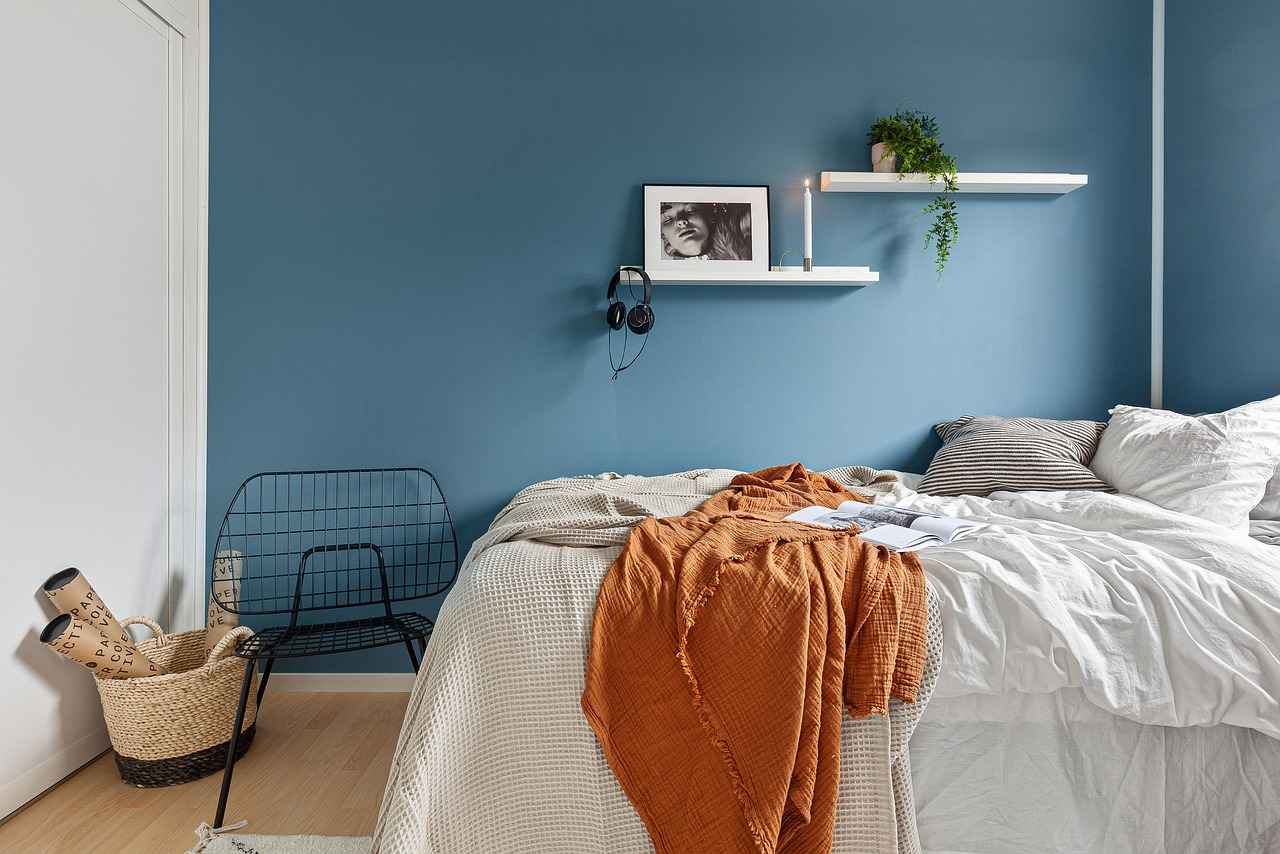
Creating Your Own Kimono Patterns
can be a deeply rewarding and creative endeavor. This section offers a comprehensive guide to help you craft unique and personalized designs that reflect your individual style and artistic vision.
Before diving into the design process, it’s essential to understand the basics of kimono patterns. Familiarizing yourself with traditional motifs and their meanings can serve as inspiration for your creations. Consider exploring patterns like Asanoha and Seigaiha, which not only carry cultural significance but also offer beautiful geometric shapes and natural themes.
- Research and Inspiration: Start by gathering inspiration from various sources, including books, online galleries, and even nature. Look for color combinations, shapes, and themes that resonate with you.
- Sketch Your Ideas: Begin sketching your designs on paper. Don’t hesitate to experiment with different patterns and motifs. This stage is all about exploration and creativity.
- Choose Your Color Palette: Colors can dramatically affect the mood of your kimono. Select a palette that reflects your personal style or the message you wish to convey through your design.
Once you have your initial designs, it’s time to select the right materials. The fabric you choose will impact the final look and feel of your kimono. Consider traditional fabrics like silk or cotton, which drape beautifully and enhance the overall aesthetic of your design.
Incorporating personal elements into your patterns can truly make them one-of-a-kind. Think about adding meaningful symbols or motifs that represent your heritage or personal experiences. This will not only add depth to your design but also create a connection between you and the garment.
Finally, don’t forget to test your designs by creating samples. This will help you understand how your patterns work in real life and allow you to make adjustments as needed. Remember, the process of creating your own kimono patterns is as much about the journey as it is about the final product.
Embrace this creative process and let your imagination guide you to craft beautiful, personalized kimono patterns that reflect your unique style.
Choosing the Right Fabrics
Fabric selection is crucial when embarking on a kimono project, as it significantly influences the overall aesthetics and functionality of the garment. The right fabric not only enhances the visual appeal but also ensures comfort and durability. In this section, we will explore various fabric options suitable for different kimono patterns and styles, helping you make informed choices for your next fashion endeavor.
- Cotton: A versatile and breathable option, cotton is ideal for casual kimonos. Its softness makes it comfortable for everyday wear, and it holds colors well, allowing for vibrant patterns.
- Silk: Known for its luxurious feel and sheen, silk is often used for formal kimonos. This fabric drapes beautifully, enhancing intricate designs and patterns while providing a sophisticated look.
- Linen: Perfect for warmer climates, linen is lightweight and breathable. It offers a more relaxed appearance, making it suitable for summer kimonos. Its natural texture adds depth to simple designs.
- Rayon: This fabric mimics the softness of silk but is more affordable. Rayon is great for flowing designs and can be printed with detailed patterns, making it a popular choice for contemporary kimonos.
- Polyester: Often used in blends, polyester is durable and resistant to wrinkles. It is an excellent choice for kimonos that require easy maintenance while still looking stylish.
When selecting fabrics, consider the weight and texture that align with your chosen pattern. For instance, heavier fabrics work well with traditional patterns like Asanoha, while lighter materials complement modern styles. Additionally, think about the color and print that best reflect your vision. By carefully choosing the right fabric, you can elevate your kimono project to new heights of creativity and style.
Incorporating Personal Elements
Adding personal touches to your kimono patterns can transform them into truly unique pieces that reflect your individual style and story. This section provides a variety of ideas on how to seamlessly integrate personal elements into your designs, ensuring that your kimonos stand out in a crowd.
- Use of Personal Symbols: Consider incorporating symbols that hold personal significance. This could be anything from a family crest to a favorite flower. By integrating these symbols into your pattern, you create a narrative that is uniquely yours.
- Color Choices: Colors evoke emotions and memories. Choose colors that resonate with you or represent important milestones in your life. For example, a vibrant red might symbolize passion, while soft blues can evoke calmness.
- Fabric Selection: The choice of fabric can also reflect your personality. Whether you prefer the elegance of silk or the comfort of cotton, the texture and feel of the fabric can enhance the overall aesthetic of your kimono.
- Custom Prints: Consider designing your own print or pattern. This could involve digital designs or hand-painted elements that showcase your artistic skills. Personal prints can make your kimono truly one-of-a-kind.
- Incorporating Memories: Think about including elements that remind you of cherished memories, such as a pattern inspired by a favorite vacation spot or a design that reflects a significant life event.
By thoughtfully considering these elements, you can create a kimono that not only showcases your fashion sense but also tells your unique story. Embrace your creativity and let your kimonos be a canvas for your personal expression.
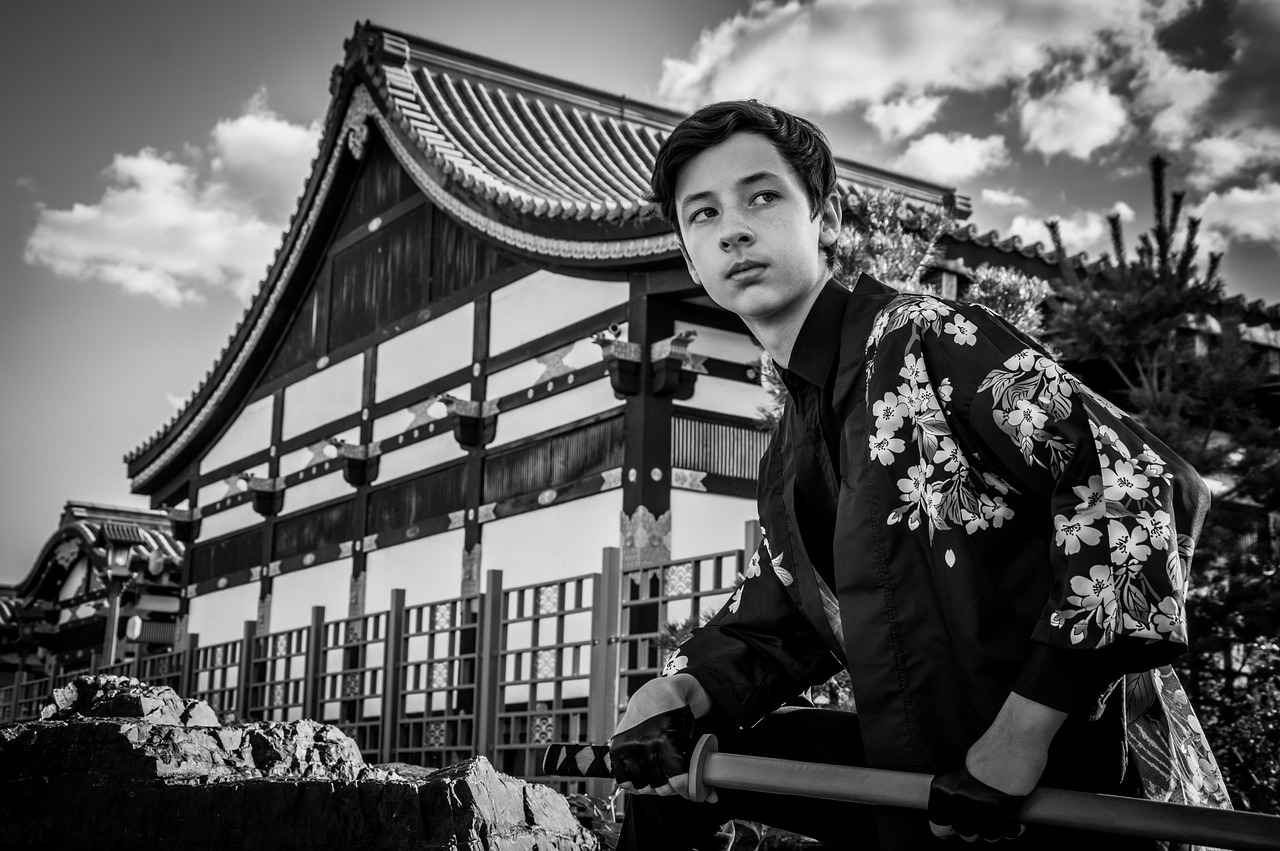
Conclusion: Embrace the Beauty of Kimono Patterns
Kimono patterns are more than just designs; they represent a rich tapestry of cultural heritage and artistic expression that has been refined over centuries. Each pattern tells a story, often rooted in tradition and symbolism, making them a meaningful choice for any fashion project. By incorporating these intricate designs into your work, you not only create visually stunning pieces but also pay homage to a profound cultural legacy.
When you choose to work with kimono patterns, you open a gateway to a world filled with vibrant colors, unique shapes, and deep meanings. Traditional patterns like Asanoha and Seigaiha serve as excellent starting points. Asanoha, with its geometric representation of hemp leaves, symbolizes growth, while Seigaiha, depicting waves, embodies peace. These elements can be seamlessly integrated into modern designs, allowing for a fusion of past and present.
Moreover, contemporary designers are continually finding innovative ways to reinterpret these classic motifs, making them relevant in today’s fashion landscape. By merging kimono aesthetics with Western styles, designers create garments that appeal to a broader audience, showcasing the versatility of these patterns.
As you embark on your own fashion project, consider the importance of fabric selection and how personal touches can enhance your designs. Whether you opt for traditional silks or modern materials, the essence of kimono patterns can shine through your creations.
In conclusion, embracing kimono patterns in your fashion endeavors not only enriches your designs but also connects you to a beautiful narrative of culture and artistry. Let these patterns inspire you to create something that is not just visually appealing but also meaningful and reflective of a rich heritage.
Frequently Asked Questions
- What are the most popular traditional kimono patterns?
The most popular traditional kimono patterns include Asanoha, which symbolizes growth, and Seigaiha, representing peace. These patterns have rich histories and are often used in various kimono designs.
- How can I incorporate kimono patterns into modern fashion?
You can blend traditional kimono patterns with contemporary styles by mixing them with Western fashion elements. This fusion creates unique garments that appeal to a broader audience, allowing for creative expression in your wardrobe.
- What fabrics are best for making a kimono?
Choosing the right fabric is essential for your kimono project. Lightweight fabrics like silk or cotton are ideal for traditional looks, while heavier materials can be used for modern interpretations. Always consider the drape and feel of the fabric to achieve the desired effect.
- Can I create my own kimono patterns?
Absolutely! Designing your own kimono patterns can be a fun and fulfilling project. You can start by sketching ideas and incorporating personal elements that reflect your style, making your kimono truly unique.
- What color trends should I consider for kimono patterns?
Current color trends in kimono patterns often feature bold, vibrant hues as well as soft pastels. Experimenting with different color combinations can enhance the visual appeal of your designs, making them stand out.
